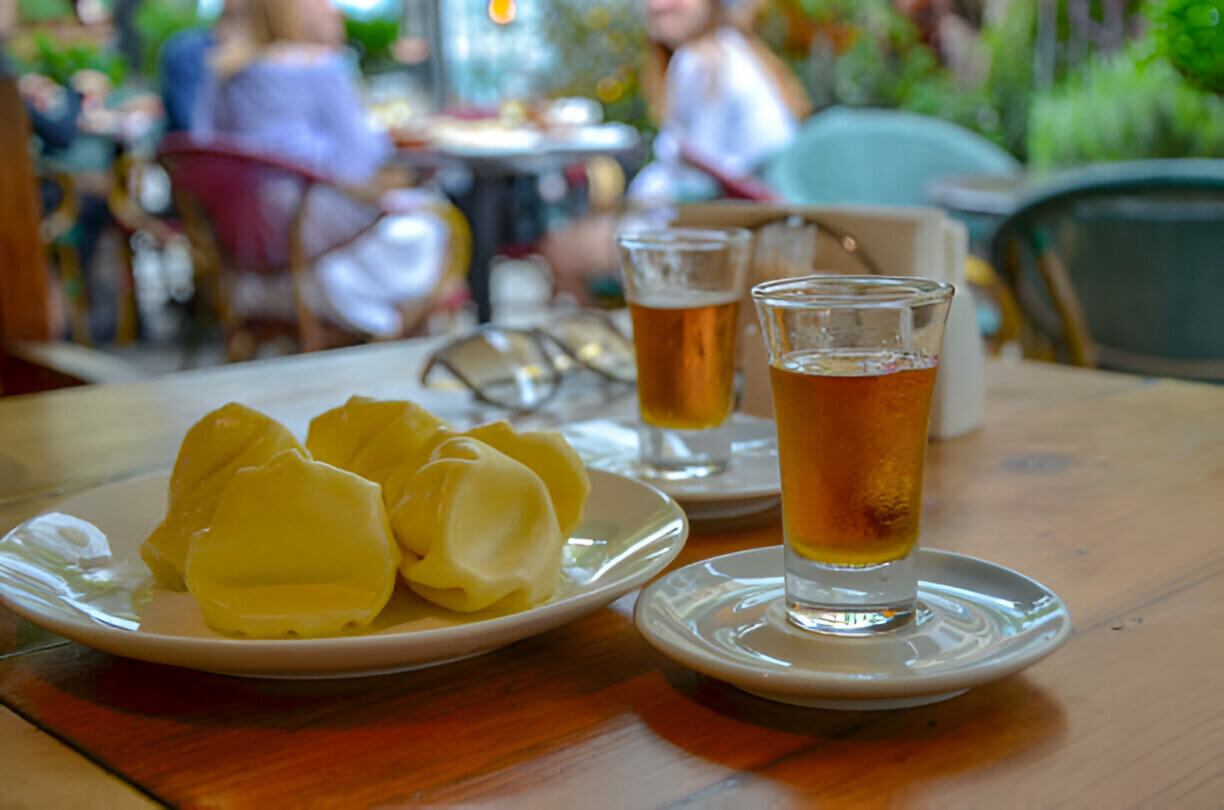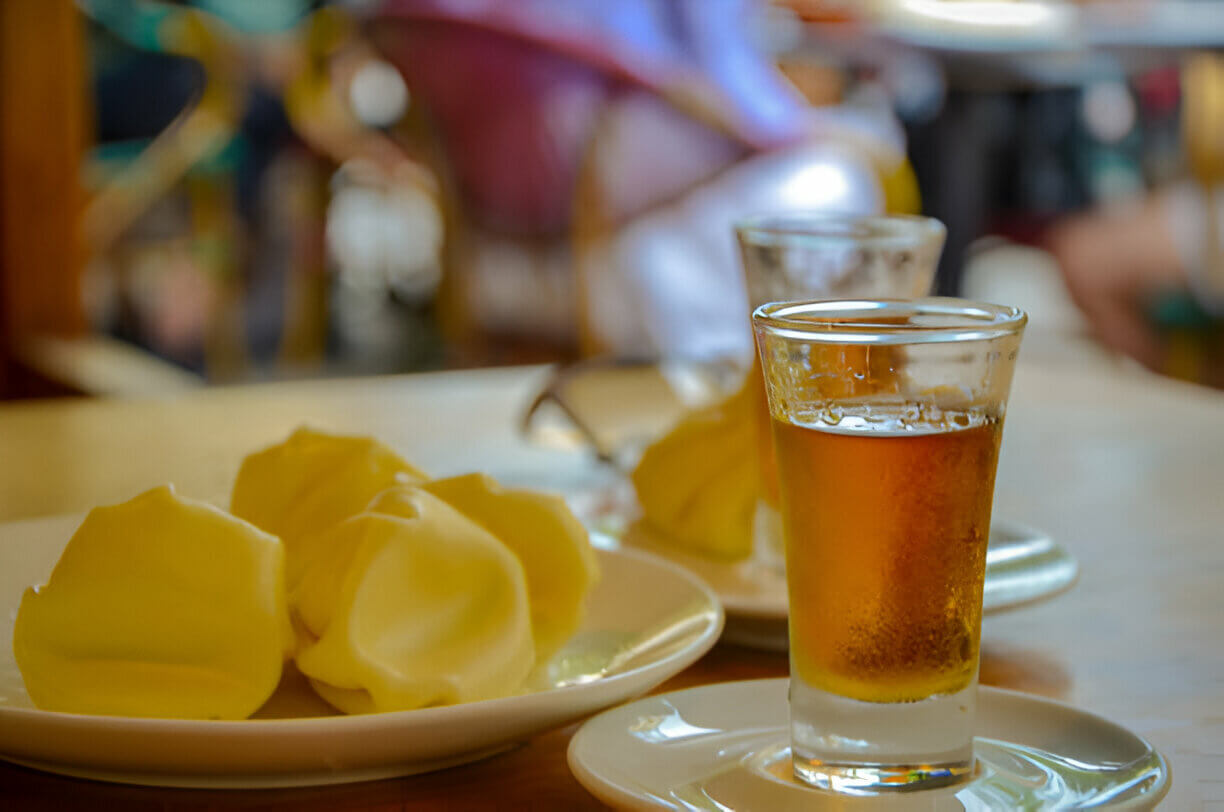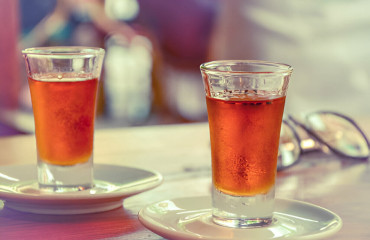Chacha is a traditional Georgian alcoholic beverage, akin to vodka but primarily made from grapes. This strong spirit, often with an alcohol content of around 40-50%, carries within it the history of many generations, ranging from simple recipes to complex and refined variations. It embodies the spirit of nature, as its main components are sourced from local ecosystems. The producers themselves play a crucial role, passing down their knowledge from generation to generation. Of course, you don't need to know everything about the drink to love it, but if you're curious, you become an appreciator!
History of chacha
Chacha has deep roots in Georgian history and culture. This strong spirit is considered one of many types of traditional grape brandies common in the Caucasus region. The history of chacha spans millennia and is closely tied to ancient Georgian winemaking methods. Georgia, often referred to as the birthplace of wine, has used and developed distillation methods for chacha production over many centuries.
Chacha was traditionally produced in home settings, and each family could have its own unique recipe. The beverage was used not only for pleasure but also as medicine, believed to possess healing properties. In modern Georgia, chacha remains a symbol of hospitality and national pride, as well as a popular choice for celebrating important events and family gatherings.

Chacha production technology
The basis for chacha is grape pomace, which remains after wine production. Here are the main steps of chacha production technology:
- Harvesting grape pomace. The process of making chacha begins with gathering grape pomace, which includes skins, seeds, and sometimes stems, left over after pressing grapes for wine.
- Fermentation. The pomace is placed in large containers where it undergoes primary fermentation. This process can last from several days to several weeks and helps convert sugars into alcohol.
- Distillation. After fermentation, the mixture undergoes distillation. In Georgia, traditional distillers called "chacha stills" or "chacha kettles" are often used for this purpose. Distillation usually occurs twice to increase the alcohol content and purify the beverage.
- Clarification and aging. The alcohol obtained after distillation may undergo further filtration and aging. Some producers leave chacha to mature in oak barrels, adding additional flavors and smoothness to the drink.
- Bottling. The finished chacha is bottled. It can be either colorless or slightly colored, depending on the production method and aging process.
Depending on the region and producer, there may be variations in these basic steps, as well as the addition of herbs and fruits for flavoring. These nuances make each chacha unique.
Tasting characteristics of chacha
The tasting characteristics of chacha can vary widely depending on the production region, grape varieties used, and the specifics of the distillation process. In general, chacha is known for its bright and powerful aroma and taste, which can include notes of fresh and dried fruits, herbs, and flowers. Nutty and vanilla nuances are often present, especially if the drink has been aged in oak barrels.
Chacha can range from very smooth and mellow to more sharp and fiery, depending on the degree of purification and alcohol strength. The typical alcohol content of chacha varies from 40 to 50 percent, making it a strong and intense beverage. Chacha's taste is often described as deep and complex, with notable tannic structure and a long, sometimes lingering finish.

How to serve chacha
Chacha is traditionally served chilled but not ice-cold to fully reveal its aromas and flavors. The ideal serving temperature is around 18-20 degrees Celsius. Chacha is often served in small shot glasses or special small glasses, allowing it to be enjoyed in small sips.
In Georgia, chacha is often served as a welcome drink or during toasts at celebrations and family gatherings. It can be accompanied by various snacks such as cheeses, meat dishes, or nuts, which help soften the strength of the drink and enhance its flavor qualities.
Chacha can also be used as a digestif, served after the main meal to aid digestion. Some prefer to add ice to chacha or use it in cocktails to add strength and a distinctive grape aroma. Overall, there are no strict rules for serving this drink, and you can enjoy it according to your taste and preferences.
What is the best chacha in Georgia? Opinions on this vary, but aged chacha from Kakheti, various chachas flavored with fruits and herbs, and double-distilled chacha are all highly popular choices.
Types of chacha at RadioCafe
At the Georgian cuisine restaurant RadioCafe, you can enjoy a variety of chacha offered in several variations. Here is a list of five popular options offered at our Georgian cuisine restaurant:
- Classic chacha. Traditional Georgian chacha, distilled from grape pomace, retaining a clean and bright grape aroma. This option is ideal for those who appreciate the classic taste.
- Oak-aged chacha. Chacha is aged in oak barrels, giving it a deeper and richer flavor with hints of vanilla and wood. This option is perfect for connoisseurs of more complex aromas.
- Plum-flavored chacha. Flavored chacha with the addition of plum, which gives the drink sweet and fruity notes. An excellent choice for those who prefer sweet liqueurs.
- Peach-flavored chacha. Another fruity option where chacha is enriched with the aroma of fresh peaches. This drink stands out for its delicacy and freshness.
- Lime-flavored chacha. Chacha with the addition of lime, giving the drink a citrus freshness and tanginess. Perfect for refreshing cocktails or as a digestif.
These varieties of chacha offer an interesting addition to the Georgian gastronomic experience, allowing guests to explore different tastes and aromas.





